Campus News
This is UCSC
News and people of note
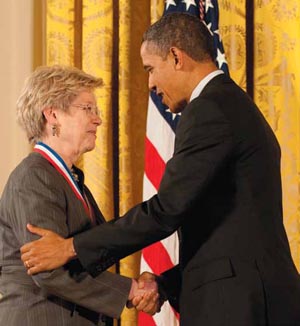
Astronomer gets White House recognition
President Obama congratulates Sandra Faber after awarding her the National Medal of Science. (Photo by Ryan K Morris/National Science & Technology Medals Foundation)
President Barack Obama presented astronomer Sandra Faber with the National Medal of Science in a White House ceremony in February.
Faber, a University Professor of astronomy and astrophysics at UCSC and the interim director of UC Observatories, was honored along with 11 other recipients of the National Medal of Science and 11 recipients of the National Medal of Technology and Innovation.
These are the highest honors bestowed by the U.S. government upon scientists, engineers, and inventors. Chancellor George Blumenthal accompanied Faber to the ceremony.
Faber was recognized “for leadership in numerous path-breaking studies of extragalactic astronomy and galaxy formation, and for oversight of the construction of important instruments, including the Keck telescopes.”
Ph.D. in feminist studies launches
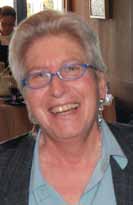
Professor Bettina Aptheker (photo by Melanie Wylie) |
Guests included Chancellor Blumenthal, professor Kelly Weisberg, campus provost and executive vice chancellor Alison Galloway, founding department faculty member Bettina Aptheker, and former department chair and professor emerita Angela Davis.
The campus is now accepting applications for the new Ph.D. program in feminist studies, which is set to begin this fall.
Also newly launched are a doctoral program in Latin American and Latino studies, a master’s program in theater arts, and a master’s program in technology and information management.
$5 million gift to give old barn new purpose
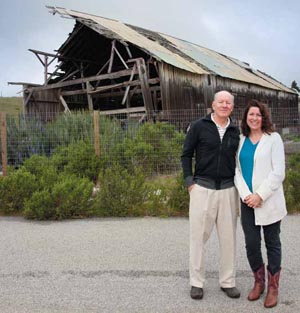
Alec and Claudia Webster, trustees of the Helen and Will Webster Foundation (photo by Carolyn Lagattuta) |
Still, he saw an amazing opportunity. If restored, the barn could be a way to honor the history of UC Santa Cruz and the land itself, bring new focus to South Campus, add momentum to adjacent environmental and food sustainability programs, and become a catalyst for others to invest in the university.
Webster and his wife Claudia knew they could make the difference, do something that could stand for the next 50 years—and with care, perhaps another 150 years. As trustees of the Helen and Will Webster Foundation, they announced a gift in March of $5 million. It will be used to restore the Hay Barn as the centerpiece of a revived campus entrance and home for UCSC’s innovative sustainability programs, and to fund programs centered there.
They had grown to love the barn and its heritage. Its hand-hewn beams, mortise and tenon joinery, determination to stay standing—all spoke of timeless principles.
For a long time, the barn was just there, waiting it seems, for Alec Webster to notice. In the 14 years that he worked on campus, Webster used the West Entrance to get to Science Hill, not the Main Entrance that would have taken him by the Hay Barn each day. As a designer and machinist for precision instrumentation developed in the Santa Cruz Institute of Particle Physics, his work contributed to groundbreaking science here and far, including Switzerland, where it helped CERN hunt for the Higgs boson.
When Webster decided in his late 40s to finish what he had started many years earlier at UC Santa Barbara—a degree—he enrolled at UCSC as a re-entry undergraduate. A year after he ended his affiliation as an employee of the university, he became an alum (College Eight, 2002, Environmental Studies). His time in Santa Barbara was fruitful too: It was in geology class there in 1972 that he met Claudia, who would become an art teacher as well as his partner in life and in saving an old barn.
As an Environmental Studies major, the barn not far from the campus farm began to show up more often in Webster’s line of sight. He studied agroecology and soil conservation and was inspired by the work being done to research sustainability practices and train farmers in them.
The Websters’ philanthropy at UCSC began in 2008 with a $30 gift to Friends of the Farm and Garden. It grew to include a variety of programs, from scholarships to the Grateful Dead Archive, but most significantly those associated with food sustainability and the 32-acre Cowell Lime Works Historic District, which is listed on the National Register of Historic Places.
In the 1960s, when the university was founded, the barn was already 100 years worn and facing an uncertain future. The property in a great meadow overlooking Monterey Bay had been in service as a cattle ranch, as a quarry, and as a lime works. Several of the old buildings were restored and put to use as part of the new university—including the old cookhouse, which became an Admissions Office, and the Cowell Family house, which first served as a provost residence and later for other uses. The Hay Barn was among those ignored.
“If you don’t preserve it, everyone forgets,” Webster says. “If these buildings disappear the connection to the land and its history will be lost.”
Webster began to think of all that needed to be done in terms of a long-ago conversation with his dad as they watched a huge oil tanker from shore and imagined how difficult it would be to turn it around. “It takes forever to turn an oil tanker,” Webster says. “But if you never start turning, it will never turn. Somebody has to start.” That is how he views the barn project. It is the foundation that carries his parents’ names that is making this turnaround possible.
He hopes many others will step forward, whether it is to tackle other restoration projects in the historic district, or in one of the many other areas where private support is also needed to turn things.
“It’s a good time to get out there and do something different,” Webster says. “If you wait five years for things to change or get better, you will have accomplished nothing but waiting.”
Meanwhile, he and Claudia and the scores of others on campus and in the community who have come together to bring this project to the fore, are looking forward to seeing the Hay Barn standing tall in 2015. That is when the university will celebrate the 50th anniversary of its founding on a spectacular piece of land with a rich history. Where it is still possible to do something truly different, like save a 150-year-old barn.
More on the Hay Barn project.
Architect Frank Gehry to be honored at 2013 Founders Celebration
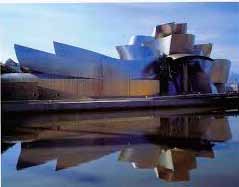
The Guggenheim Museum in Bilbao |
The award-winning architect is often described as one of the most important and influential architects of our time.
Don and Diane Cooley, long-time supporters and advocates of UCSC, will receive the Fiat Lux Award.
The Alumni Achievement Award will go to Jock Reynolds (Stevenson ’69, psychology), artist and director of the Yale University Art Gallery.
These awards are part of the campus’s celebration of creativity, innovation, and the arts at UCSC. The Founders Day Gala Dinner will be October 18 at the Cocoanut Grove in Santa Cruz.
The celebration continues with the Maitra Lecture on December 5, to be delivered by renowned theater director Peter Sellars.
Streamlining the search for new antibiotics
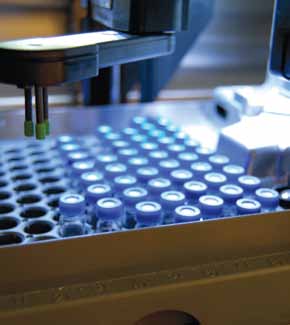
Robotic equipment at the UCSC Chemical Screening Center was used to screen natural product extracts for novel antibiotics. |
Researchers at UCSC have developed a new strategy for finding novel antibiotic compounds, using a diagnostic panel of bacterial strains for screening chemical extracts from natural sources.
Public health officials warn of a looming antibiotic crisis due to the steady increase in antibiotic resistance and a dramatic decline in the development of new antibiotics.
Most currently available antibiotics are derived from natural compounds produced by microorganisms such as bacteria and fungi. New antibiotics developed by drug companies are often synthetically tailored variations of existing classes of antibiotics. To combat the problem of antibiotic resistance, however, researchers desperately want to find antibiotics with completely novel structures and modes of action.
The new screening procedure, called BioMAP (antibiotic mode of action profile), promises to streamline the discovery of new antibiotics from natural sources by providing a low-cost, high-throughput platform for identifying compounds with novel antibiotic properties.
UCSC ranked 2nd for research influence

UCSC researcher |
Published as part of the Times Higher Education World University Rankings 2012–13, the analysis, conducted by Thomson Reuters, measured overall research influence based on the average number of citations per paper, using a database of more than 50 million citations to 6 million journal articles published over five years, from 2006 to 2010.
With a citation score of 99.9, UC Santa Cruz has the same score as the Massachusetts Institute of Technology and is surpassed only by Rice University, with a score of 100.
Coming to UCSC: Institute of the Arts & Sciences
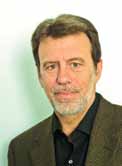
John Weber |
Its newly hired director is John Weber, formerly Dayton Director of the Frances Young Tang Teaching Museum and Art Gallery at Skidmore College in Saratoga Springs, New York.
Conceived as more than a museum, the institute will be designed to function as an intellectual hub for visiting faculty, UCSC faculty, and artists, scientists, and humanists-in-residence, as well as provide space for site-specific installations, seminars, events, and hands-on research.
Kapany provides boost for entrepreneurship program
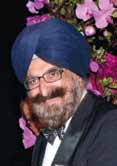
Narinder Kapany (photo by r. r. jones) |
The Narinder Kapany Professorship in Entrepreneurship is based initially at UCSC’s Baskin School of Engineering in support of the school’s leadership in the establishment of a comprehensive entrepreneurship program for the campus.
This is the second endowed chair funded by Kapany, who was a Regents Professor at UC Santa Cruz from 1977 to 1983 and currently serves as a UC Santa Cruz Foundation trustee. In 1999, he endowed the Narinder Singh Kapany Chair in Optoelectronics at the Baskin School of Engineering.
Never get poison oak again?
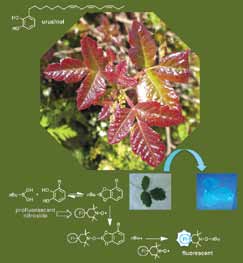
Poison oak |
The last time Rebecca Braslau got a bad case of poison oak, she found herself pondering the chemical structure of urushiol, the toxic oil in poison oak and its relatives, poison ivy and poison sumac (all species of Toxicodendron).
“I thought, I’m a chemist. I should be able to do something about this,” said Braslau, a professor of chemistry and biochemistry at UCSC.
Now her lab has developed a spray that can be used to detect urushiol on clothes and equipment, and potentially on skin, allowing people to wash off the oil before it causes an itchy, blistering skin rash.
Undergrads make seagrass findings
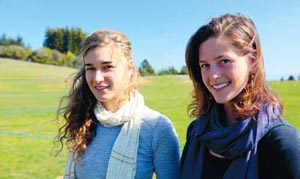
Senior marine biology majors Hannah Perlkin and Emily Tucker (photo by Carolyn Lagattuta) |
Then they began making some interesting discoveries about Neptune grass, the iconic seagrass of the Mediterranean Sea, and they weren’t the only ones excited by their findings.
Leading European seagrass researchers are also interested, and the U.S. National Science Foundation (NSF) has awarded a grant enabling the students, both senior marine biology majors, to continue their research in the Mediterranean and work with European collaborators. Their research may have implications for seagrass restoration efforts.
“This seagrass project is a good example of the value of field classes, the quality of our undergraduates, and the emphasis that NSF places on fostering undergraduate research,” said Peter Raimondi, professor and chair of ecology and evolutionary biology.
In memoriam: Don Rothman
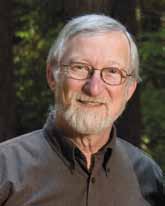
Don Rothman (photo by Jim MacKenzie) |
Rothman was also well known as a champion of UCSC’s seventh college, Oakes, which he joined as a lecturer in 1973 when he was 28.
While Rothman is recognized for his lasting imprint on Oakes College, he is also well known for developing writing courses that helped students from all backgrounds and majors find their voice on campus and engage with the wider world.
Don Rothman’s family requests that remembrances be sent to: The Dreamer’s Fund, which supports UCSC’s undocumented (AB-540) students, The Don Rothman Endowed Award in the Writing Program, or Shakespeare Santa Cruz. To make a donation online to any of these programs, visit giving.ucsc.edu.